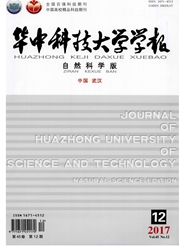

 中文摘要:
中文摘要:
为解决声纳图像本身特征信息较弱,而树结构化的马尔可夫随机场(TS-MRF)算法在分割中过分依赖祖先节点,且在标号分割中仅考虑区域内部一致性而忽视区域边缘的各向异性的问题,提出了一种模糊树结构化的马尔可夫随机场(TS-MRF)模型的声纳图像分割算法.在TS-MRF势函数中引入广义模糊算子,以模糊隶属度作为像素相似度度量,将邻域信息融入到分裂节点参数的确定中,使得先验概率的刻画更加精细.已知图像观测特征前提下定义分裂增益系数来反映分裂前、后标号后验概率的比值,并将对增益系数的判断作为确定二叉树节点分裂的依据,降低求解后验概率最大的计算复杂度.结合区域分裂合并方法完成对声纳图像无监督分割.实验结果从视觉效果和客观评价表明:本分割方法相比于传统MRF和TS-MRF等分割算法,具有较高的分割精度和高鲁棒性.
 英文摘要:
英文摘要:
For the traditional image segmentation methods have poor robustness and low accuracy when processing the sonar image, and characteristics of the sonar image itself are weak, meanwhile tree-structured Markov random field (TS-MRF) algorithm is too dependent on the ancestor nodes in segmentation, and only the intra-region consistency is considered in label segmentation while the ani- sotropy of the edge of the region neglected, a sonar image segmentation method was proposed based on fuzzy TS-MRF model. First, in the TS-MRF potential function, the generalized fuzzy operator was introduced with the fuzzy membership degree used as the pixel similarity measure to integrate the neighborhood information into the determination of the parameters of the splitting node, thus making the depiction of prior probability more elaborate. Then, the splitting gain coefficient was defined un- der the premise of the known image observation characteristics to reflect the ratio of posterior proba- bilities of the labels before and after splitting, and the judgment of the gain coefficient was used as the basis for determining the splitting of the binary tree nodes to reduce the maximum computation com- plexity of solving posterior probability. Finally, the regional split merger method was combined to complete the unsupervised segmentation of the sonar image. Experimental results show that the pro- posed segmentation method has higher segmentation precision and higher robustness compared with traditional MRF, TS-MRF segmentation algorithms.
 同期刊论文项目
同期刊论文项目
 同项目期刊论文
同项目期刊论文
 期刊信息
期刊信息
